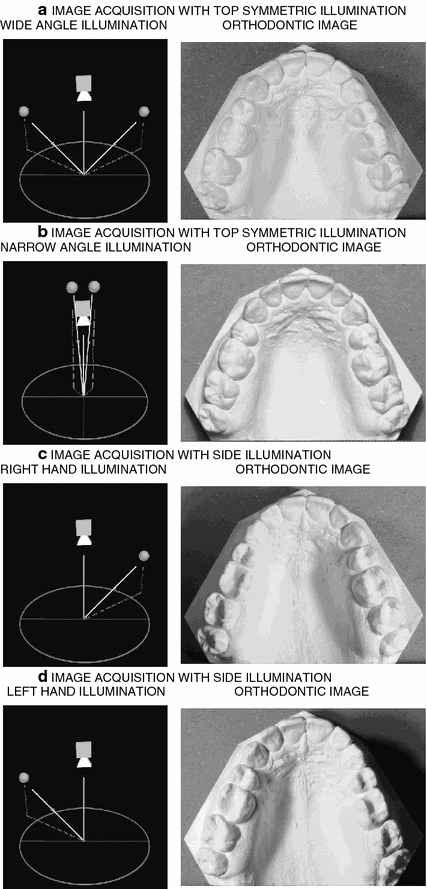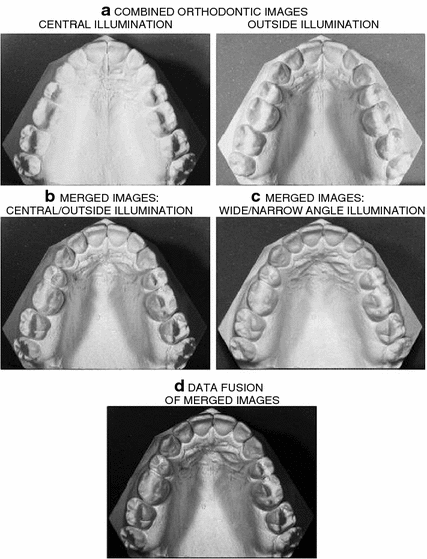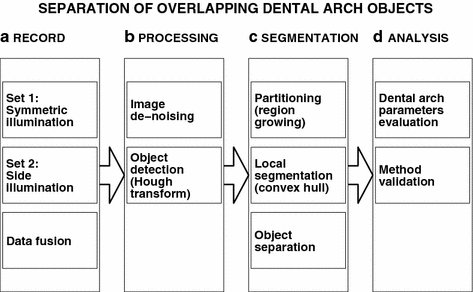Separation of overlapping dental arch objects using digital records of illuminated plaster casts
- PMID: 26162755
- PMCID: PMC4499221
- DOI: 10.1186/s12938-015-0066-9
Separation of overlapping dental arch objects using digital records of illuminated plaster casts
Abstract
Background: Plaster casts of individual patients are important for orthodontic specialists during the treatment process and their analysis is still a standard diagnostical tool. But the growing capabilities of information technology enable their replacement by digital models obtained by complex scanning systems.
Method: This paper presents the possibility of using a digital camera as a simple instrument to obtain the set of digital images for analysis and evaluation of the treatment using appropriate mathematical tools of image processing. The methods studied in this paper include the segmentation of overlapping dental bodies and the use of different illumination sources to increase the reliability of the separation process. The circular Hough transform, region growing with multiple seed points, and the convex hull detection method are applied to the segmentation of orthodontic plaster cast images to identify dental arch objects and their sizes.
Results: The proposed algorithm presents the methodology of improving the accuracy of segmentation of dental arch components using combined illumination sources. Dental arch parameters and distances between the canines and premolars for different segmentation methods were used as a measure to compare the results obtained.
Conclusion: A new method of segmentation of overlapping dental arch components using digital records of illuminated plaster casts provides information with the precision required for orthodontic treatment. The distance between corresponding teeth was evaluated with a mean error of 1.38% and the Dice similarity coefficient of the evaluated dental bodies boundaries reached 0.9436 with a false positive rate [Formula: see text] and false negative rate [Formula: see text].
Figures






References
-
- Ogodescu AS, Sinescu C, Ogodescu EA, Negrutiu M, Bratu E. Digital tools in the interdisciplinary orthodontic treatment of adult patients. NAUN Int J Biol Biomed Eng. 2010;4(3):97–105.
MeSH terms
LinkOut - more resources
Full Text Sources
Other Literature Sources
Miscellaneous

